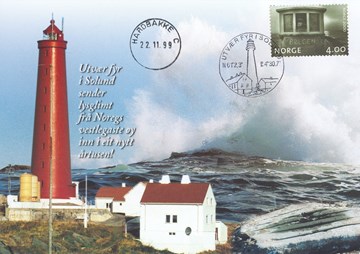


From 1900 to 1920, 37 lighthouses were built in this country. One of these was the Utvær lighthouse, and its impressive and solid construction was built to withstand the extreme weather conditions.

The Ytterøyane lighthouse, the biggest in Sunnfjord, was built in 1881, and has withstood hurricanes and airplane attacks. This lighthouse is one of very few along the coast that has not yet become automated.

In 1866/87, a sturdy lighthouse with a solid reinforced stone and mortar foundation was built on a slippery, rounded-off skerry in the middle of the shipping lane.

In 1895, a lighthouse was built at Kvannhovden, and it became operational on 5 November the same year. It had a common wick lamp, and only in 1932, did the lighthouse get a much more powerful incandescent lamp.

In 1906, a lighthouse station was built at Kråkenes under pressure from the Kristiansund Skipper Association. The lighthouse is located to the west of Stad and is the most weather-exposed station along the Norwegian coastline. During World War II, it was bombed by allied forces and rebuilt about 1950. Today Kråkenes has become a popular tourist destination as well.

On the eastern Geita (literally: the Goat), a small island in the Buefjorden between Aralden and Værlandet, the Geita lighthouse is located. The eastern Geita is one of three islands; the two others are called western Geita, and the central Geita. The lighthouse became operational in 1897, and for a long while it was manned by lighthouse keepers, but in 1980, it was fully automated. Since 1982, there have been no permanent residents at the lighthouse station.